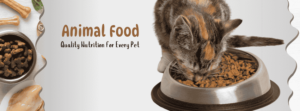Nurturing Your Beloved Pet: An In-Depth Guide to Daily Dog Nutrition
A wagging tail, bright eyes, and boundless energy are hallmarks of a healthy and happy dog. Just like humans, a cornerstone of their well-being lies in the food they consume daily. Providing a balanced and nutritious diet is essential for their growth, health and overall vitality. Navigating the world of dog food can be overwhelming; countless brands, formulas, and ingredients are vying for your attention. This comprehensive guide will delve into the essential components of a daily canine diet, explore different food types, and provide examples of specific food names to help you make informed choices for your beloved pet.
The fundamentals of a Healthy Canine Diet:
A dog’s dietary needs are complex and require a careful balance of several key nutrients. Understanding these building blocks is crucial for selecting the right food:
Protein: The cornerstone of a dog’s diet, protein is essential for building and repairing tissues, supporting muscle development, and producing enzymes and hormones. High-quality animal-based proteins are generally the most bioavailable for dogs.
Common sources include:
- Chicken: A highly digestible and popular protein source.
- Beef: Provides essential amino acids and minerals.
- Lamb: A good alternative for dogs with sensitivities to chicken or beef.
- Fish (Salmon, Whitefish, Tuna): Rich in omega-3 fatty acids, beneficial for skin, coat, and cognitive function.
- Turkey: A lean and easily digestible protein.
- Eggs: A complete protein source, often found in premium dog foods.
Fats: Fats are a concentrated source of energy and play a vital role in absorbing fat-soluble vitamins (A, D, E, and K). They also contribute to healthy skin and coat. Essential fatty acids, like omega-3 and omega-6, cannot be produced by the dog’s body and must be obtained through their diet.
Good sources include:
- Animal Fats (Chicken Fat, Beef Fat): Provide energy and flavor.
- Fish Oil (Salmon Oil, Cod Liver Oil): Excellent source of omega-3 fatty acids (EPA and DHA).
- Plant-Based Oils (Flaxseed Oil, Sunflower Oil): Provide omega-6 fatty acids and some omega-3s.
Carbohydrates: While not strictly essential in the same way as protein and fat, carbohydrates provide a readily available source of energy and dietary fiber. Opt for easily digestible and nutrient-rich sources:
- Whole Grains (Brown Rice, Oatmeal, Barley): Provide fiber, vitamins, and minerals.
- Vegetables (Sweet Potatoes, Peas, Carrots, Pumpkin): Offer fiber, vitamins, and antioxidants.
- Avoid excessive amounts of simple carbohydrates like corn and wheat, which can be harder to digest and offer less nutritional value.
Vitamins and Minerals: These micronutrients are crucial for a wide range of bodily functions, including immune support, nerve function, bone health, and energy metabolism. A high-quality commercial dog food will typically be fortified with essential vitamins and minerals such as:
- Vitamin A: Important for vision, immune function, and cell growth.
- B Vitamins (Thiamine, Riboflavin, Niacin, Pantothenic Acid, Pyridoxine, Biotin, Folate, Cobalamin): Involved in energy metabolism, nerve function, and red blood cell production.
- Vitamin C: An antioxidant that supports immune function (dogs can produce some Vitamin C, but supplementation may be beneficial in some cases).
- Vitamin D: Essential for calcium absorption and bone health.
- Vitamin E: An antioxidant that protects cells from damage.
- Vitamin K: Important for blood clotting.
- Calcium and Phosphorus: Crucial for bone and teeth health.
- Iron: Necessary for oxygen transport.
- Zinc: Supports immune function, skin health, and wound healing.
Water: Often overlooked, water is absolutely vital for all bodily functions, including hydration, digestion, temperature regulation, and waste removal. Fresh, clean water should always be available to your dog.
Navigating the Dog Food Aisle:
The dog food market offers a variety of options, each with its own advantages and considerations:
- Dry Kibble: This is the most common and often the most economical type of dog food. High-quality kibble is formulated to be nutritionally complete and balanced.
- Purina Pro Plan Adult Chicken & Rice Formula: A popular choice known for its balanced nutrition and palatability.
- Hill’s Science Diet Adult Sensitive Stomach & Skin Chicken Recipe: Formulated for dogs with digestive sensitivities.
- Royal Canin Breed-Specific Formulas (e.g., Labrador Retriever Adult): Tailored to the unique needs of specific breeds.
- Orijen Original Grain-Free Dog Food: A high-protein, biologically appropriate kibble with a variety of animal ingredients.
- Acana Regionals Wild Red Grain-Free Dog Food: Another grain-free option with a focus on regional ingredients.
- Wet/Canned Food: Wet food has a higher moisture content, which can be beneficial for hydration and palatability, especially for picky eaters or dogs with dental issues.
- Blue Buffalo Homestyle Recipe Chicken Dinner Wet Dog Food: Features real meat and wholesome ingredients.
- Merrick Backcountry Great Plains Recipe Grain-Free Wet Dog Food: A high-protein, grain-free option.
- Wellness Complete Health Adult Deboned Chicken & Sweet Potato Recipe Wet Dog Food: A balanced formula with quality ingredients.
- Royal Canin Veterinary Diet Urinary SO Wet Dog Food: A therapeutic diet formulated for urinary health issues (requires veterinary prescription).
Raw Food Diets:
These diets typically consist of raw meat, bones, and organs, along with some fruits and vegetables. Proponents believe it mimics a dog’s ancestral diet. However, raw diets require careful planning and preparation to ensure nutritional balance and minimize the risk of bacterial contamination. It is crucial to consult with a veterinarian or a veterinary nutritionist before starting a raw food diet.
- Primal Raw Frozen Formulas (e.g., Chicken Formula): Complete and balanced raw meals.
- Stella & Chewy’s Freeze-Dried Raw Dinner Patties (e.g., Chicken Recipe): Convenient and shelf-stable raw food option.
- Various smaller, local raw food suppliers offering custom blends.
Fresh/Home-Cooked Diets: Preparing your dog’s food at home allows for complete control over ingredients. However, it requires a thorough understanding of canine nutritional needs and careful planning to ensure balance. Consulting with a veterinary nutritionist is essential to formulate a complete and balanced home-cooked diet.
- Freeze-Dried Food: This type of food retains much of the nutritional value of raw ingredients while offering the convenience of kibble. It is typically rehydrated with water before feeding.
- The Honest Kitchen Whole Grain Chicken Recipe Dehydrated Dog Food: Made with human-grade ingredients.
- Ziwi Peak Air-Dried Dog Food (e.g., Lamb Recipe): A high-meat, air-dried option.
Factors to Consider When Choosing a Dog Food:
- Age and Life Stage: Puppies, adult dogs, and senior dogs have different nutritional requirements. Choose a food specifically formulated for your dog’s life stage.
- Breed Size and Activity Level: Larger breeds and more active dogs may require higher calorie and protein intake.
- Health Conditions and Sensitivities: Some dogs have allergies, intolerances, or specific health conditions that require specialized diets (e.g., grain-free, limited ingredient, prescription diets).
- Ingredient Quality: Look for foods with high-quality, recognizable ingredients, with a named animal protein source listed as the first ingredient.
- AAFCO Statement: Ensure the food has an AAFCO (Association of American Feed Control Officials) statement indicating that it provides complete and balanced nutrition for the intended life stage.
- Your Budget: Dog food prices can vary significantly. Choose a high-quality food that fits your budget.
- Your Dog’s Preferences: Palatability is important. If your dog consistently refuses a particular food, it won’t do them any good.
Feeding Guidelines and Important Considerations:
- Follow Feeding Instructions: Always adhere to the feeding guidelines provided on the food packaging, adjusting portions based on your dog’s individual needs and activity level.
- Transition Gradually: When switching to a new food, introduce it gradually over 7-10 days to avoid digestive upset. Mix a small amount of the new food with the old food, gradually increasing the proportion of the new food each day.
- Monitor Your Dog’s Weight and Body Condition: Regularly assess your dog’s weight and body condition score to ensure they are not underweight or overweight. Adjust food portions as needed.
- Provide Fresh Water Daily: Ensure your dog always has access to clean, fresh water.
- Consult Your Veterinarian: Your veterinarian is the best resource for personalized dietary recommendations based on your dog’s individual needs and health status. They can help you choose the right food and address any specific dietary concerns.
- Treats in Moderation: While treats can be a valuable tool for training and bonding, they should only make up a small percentage of your dog’s daily caloric intake to avoid weight gain and nutritional imbalances. Choose healthy treat options.
- Avoid Toxic Foods: Be aware of foods that are toxic to dogs, such as chocolate, onions, garlic, grapes, raisins, xylitol, and alcohol.
Conclusion:
Providing your dog with the right daily food is an investment in their long-term health and happiness. By understanding the essential nutrients, exploring different food types, and considering your dog’s individual needs, you can make informed choices that will fuel their body and support a vibrant and fulfilling life. Remember that consulting with your veterinarian is crucial for personalized dietary advice and to address any specific health concerns. With careful attention to their nutritional needs, you can ensure your furry friend thrives for many years to come.



